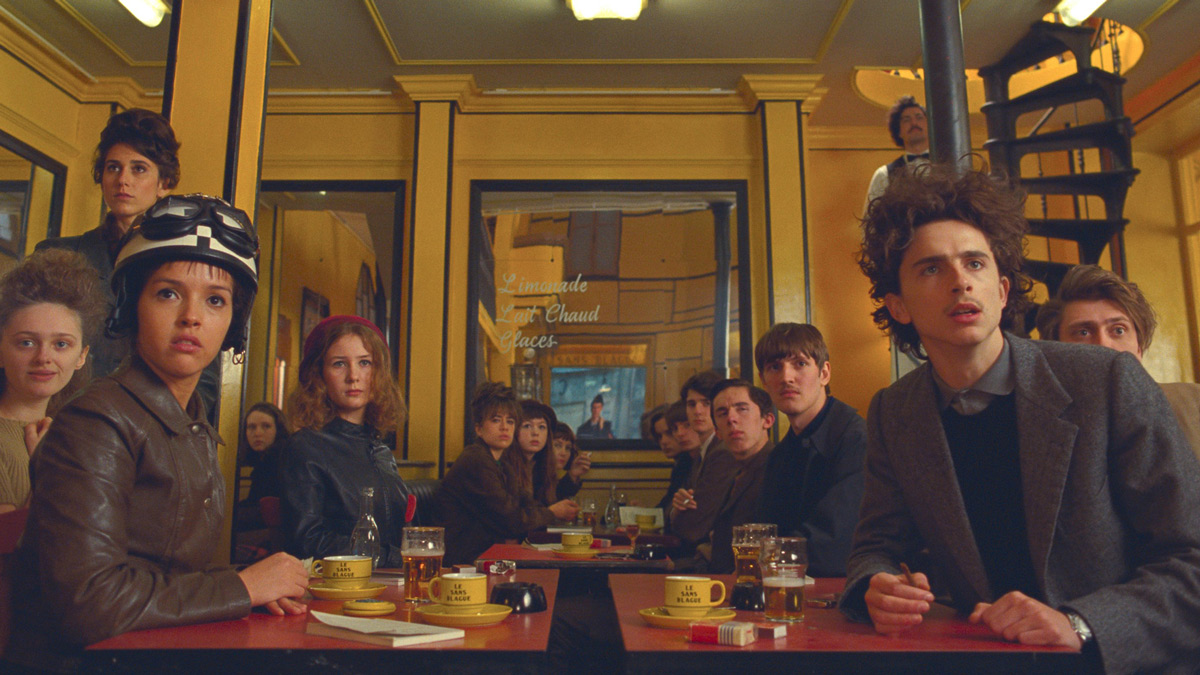
(C) 2021 20th Century Studios. All rights reserved.
"The French Dispatch of the Liberty, Kansas Evening Sun" Visit the past and learn about the new. Reconstruction of Wes Anderson's artistry
Color magician Wes' monochrome challenge
When we think about the ``eras'' and ``settings'' of director Wes Anderson's films, we find that various countries, regions, and eras are depicted in order to show his gratitude for the cultural blessings he has received. It can be predicted that the purpose of movies is to protect and pass on culture, and to give back.
In ``The French Dispatch of the Liberty, Kansas Evening Sun,'' he said, ``I want to make a short omnibus film,'' ``I want to tell a story about The New Yorker and the publishing world,'' and ``I want to make a movie set in France.'' It seems that his own long-held dreams, such as ”, were linked together and became the basis of the idea.
Director Wes has been an avid reader of the New Yorker since high school, and has also lived in France for several years. As a result of these things being mixed together, an ``omnibus story about magazines'' was developed, ``set in France in the 20th century,'' at an ``overseas branch of an American publisher.'' And in this part, we can see a new challenge for director Wes.

“The French Dispatch of the Liberty, Kansas Evening Sun” (C) 2021 20th Century Studios. All rights reserved.
That is, this work is in the magazine format as it is. The work consists of episodes such as ``Bicycle Reporter'', ``A Solid Masterpiece'', ``Revised Manifesto'', and ``Police Chief's Dining Room'', but each of these are articles published in magazines (and their behind-the-scenes stories), and are ``political''. Each section, such as the ``Culture'' section, also plays a role. Publishing terms such as ``table of contents'' and ``colophon'' appear in various places, and the audience will feel as if they are reading (watching) the final issue as a video.
`` Isle of Dogs '' also used a chapter structure like ``Part 2 ,'' The Grand Budapest Hotel '' depicts the era of 3+α by changing the aspect ratio, which is similar to a chapter structure. They had been approaching it, but it seems like they have reached another new phase. The visual expression is also full of gimmicks, such as animation (band de cine style), monochrome images, elaborate subtitles, and split screens.
In particular, the monochrome approach is quite shocking, as it could be seen as an approach that could fundamentally shake the identity of director Wes, who was a magician of color. Of course, he has made works in black and white in the past, but it must have been a big challenge to draw so many parts in black and white for a film of this scale. The same goes for us as the audience, and when we hear of ``a colorless work by director Wes Anderson,'' we cannot imagine it from the conventional image.
At the same time, however, there is also the discovery that even if you remove color, which is the film's "greatest weapon," you will still recognize it as a work by director Wes Anderson. The texture of the screen, the characters, the placement of props, the set design... Even if you take away one element, Coach Wes is still Coach Wes. ``The French Dispatch of the Liberty, Kansas Evening Sun'' is, paradoxically, a significant work that proves director Wes Anderson's unwavering authorship.
A mourning for the disappearing magazine culture

